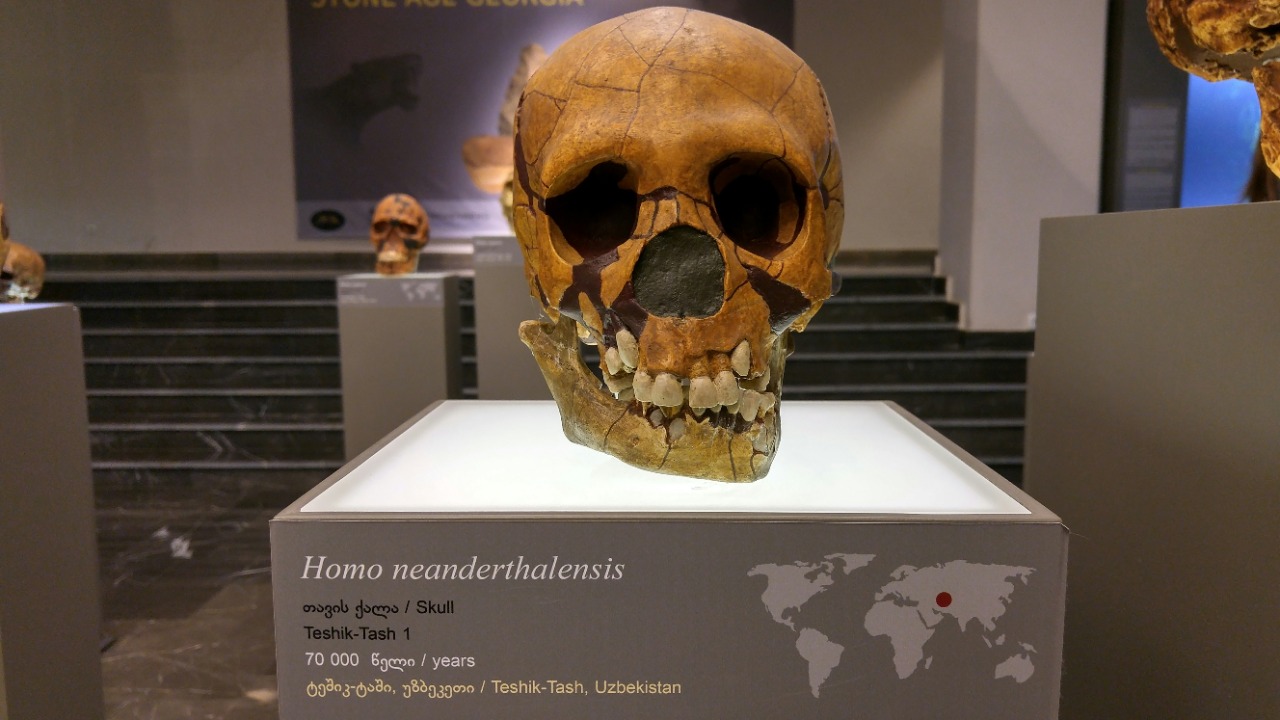
Imagine a world where our Neanderthal cousins were still alive. With their robust physical attributes and resilience, they could potentially outfight and outlift us. However, when it comes to outliving, the scenario becomes more complex. While they exhibited remarkable survival skills in their era, it’s important to note that their average lifespan was around 30-40 years, with rare individuals reaching about 45 years. This is significantly shorter than the average lifespan of modern humans, which is over 70 years. Let’s delve into the fascinating world of Neanderthals and their capabilities.
Neanderthals’ Torque-Generating Arms Could Crush Modern Lifting Records
Neanderthals were built for strength. Their humeral robusticity, or the robustness of their upper arm bones, indicates that they could generate torque forces up to 1.5 times that of modern humans during arm movements. This is based on fossil comparisons from sites like La Ferrassie, France, dated approximately 70,000 years ago. This superior upper body strength would have given them a significant advantage in tasks requiring physical power, such as hunting or combat.
It’s also worth noting that all human beings today have up to 4% Neanderthal DNA. This genetic legacy is a testament to our shared history and the physical prowess of our ancient relatives.
Thrusting Spears from Schöningen Prove Neanderthals Were Born Fighters
Archaeological evidence from Schöningen, Germany, dated 300,000 years ago, reveals that Neanderthals were skilled hunters. They used thrusting spears to hunt large mammals like horses, requiring physical prowess beyond modern human capabilities without tools. These prehistoric spears were designed for close combat, demonstrating that Neanderthals were not just strong, but also agile and strategic fighters.
These findings challenge the stereotype of Neanderthals as simple, brutish creatures. Instead, they paint a picture of a species that was capable of complex thought and planning, with physical abilities that far surpassed those of modern humans in certain respects.
Thicker Femurs Meant Neanderthals Could Haul Loads Modern Athletes Can’t Touch
Neanderthals’ physical strength wasn’t limited to their upper bodies. Bone microstructure analysis reveals that their femurs, or thigh bones, had a 20-30% higher cross-sectional area and cortical bone thickness compared to modern athletes. This enabled them to lift and carry loads estimated at 50-100 kg over long distances. This is evidenced by fossils from Krapina, Croatia, dated approximately 130,000 years ago.
This physical capability would have been crucial for survival in the harsh environments in which Neanderthals lived, allowing them to transport large amounts of food, materials, or even injured companions over considerable distances.
Shanidar 1’s Healed Wounds Show Neanderthals Survived Brutal Injuries We Wouldn’t
Neanderthals were not only strong but also remarkably resilient. The Shanidar 1 individual from Iraq, dated approximately 50,000-65,000 years ago, shows evidence of having survived severe trauma. This includes healed fractures and an amputation, suggesting that Neanderthals had a remarkable capacity for recovery. This resilience, documented in Siegel’s 1960 study, enabled them to survive into ages of 40-50 years, longer than typical for their era’s hazards.
Moreover, the presence of healed injuries on Shanidar 1 and other Neanderthal individuals suggests that they cared for their injured or sick, further highlighting their social and emotional complexity.
La Chapelle-aux-Saints Elders Lived to 50+ Without Modern Medicine
Some Neanderthals managed to reach advanced ages, even by modern standards. Dental wear and skeletal indicators from fossils like those from La Chapelle-aux-Saints, France, dated approximately 56,000 years ago, show that some Neanderthals lived to be over 50 years old. This is particularly impressive considering they did not have access to modern medicine.
These older individuals showed minimal signs of degenerative disease, implying superior physiological durability. While this doesn’t necessarily mean they could outlive modern humans, it does suggest that Neanderthals were well-adapted to their environment and capable of surviving in high-stress conditions.
In conclusion, while Neanderthals may not have been able to outlive us in terms of lifespan, their physical strength, resilience, and adaptability were truly remarkable. They were a species well-suited to their time and environment, and their legacy lives on in our own DNA.
More from MorningOverview